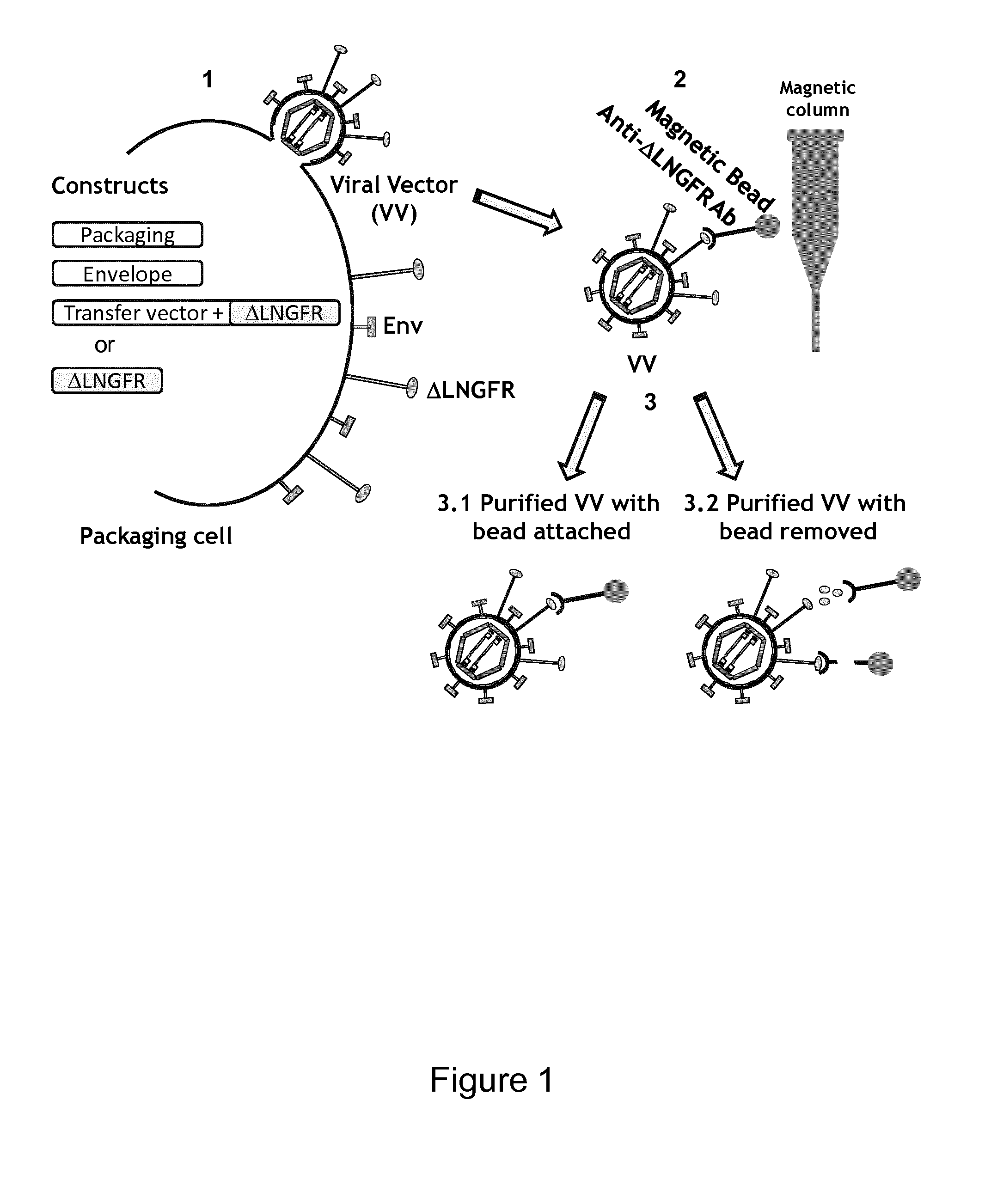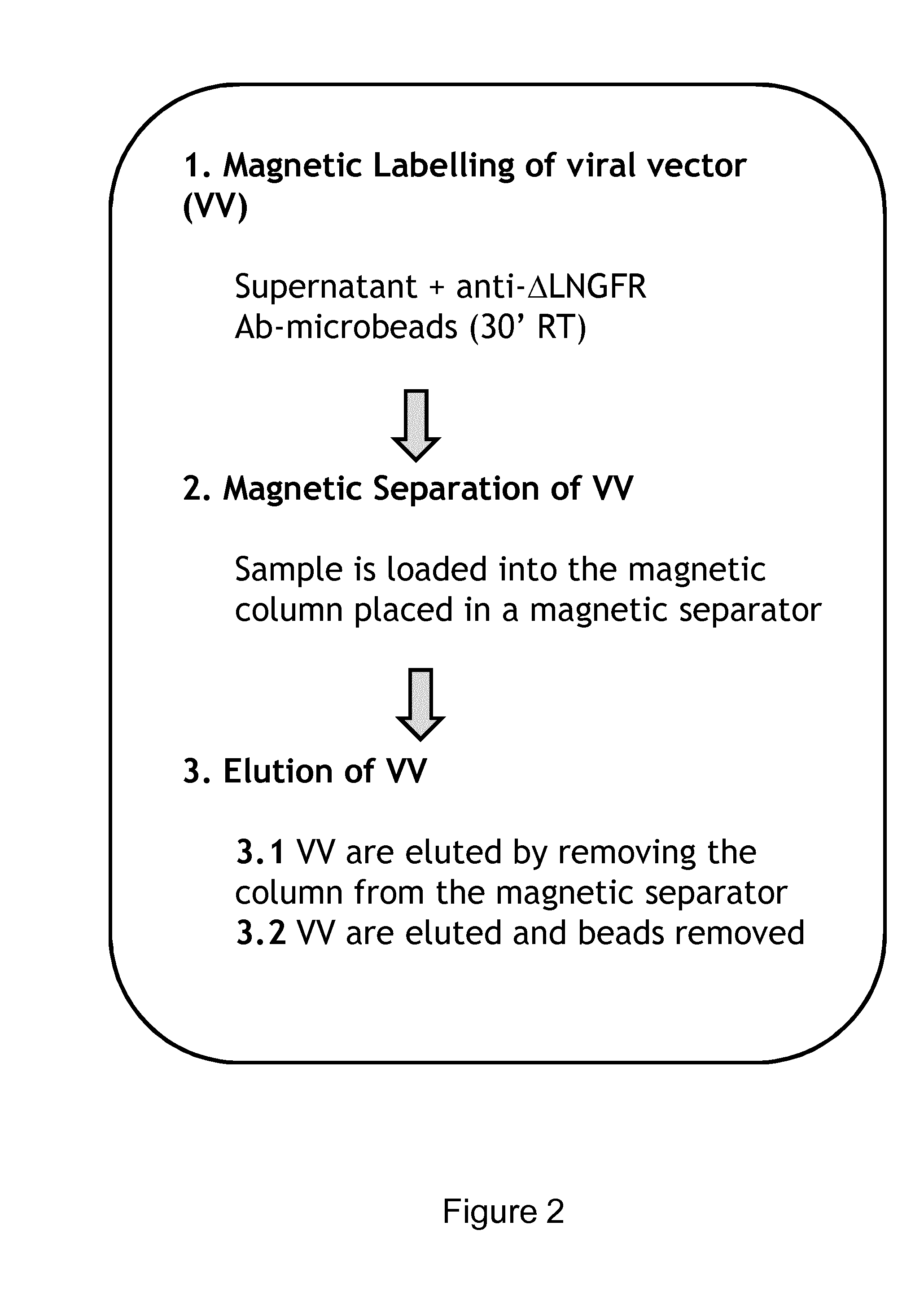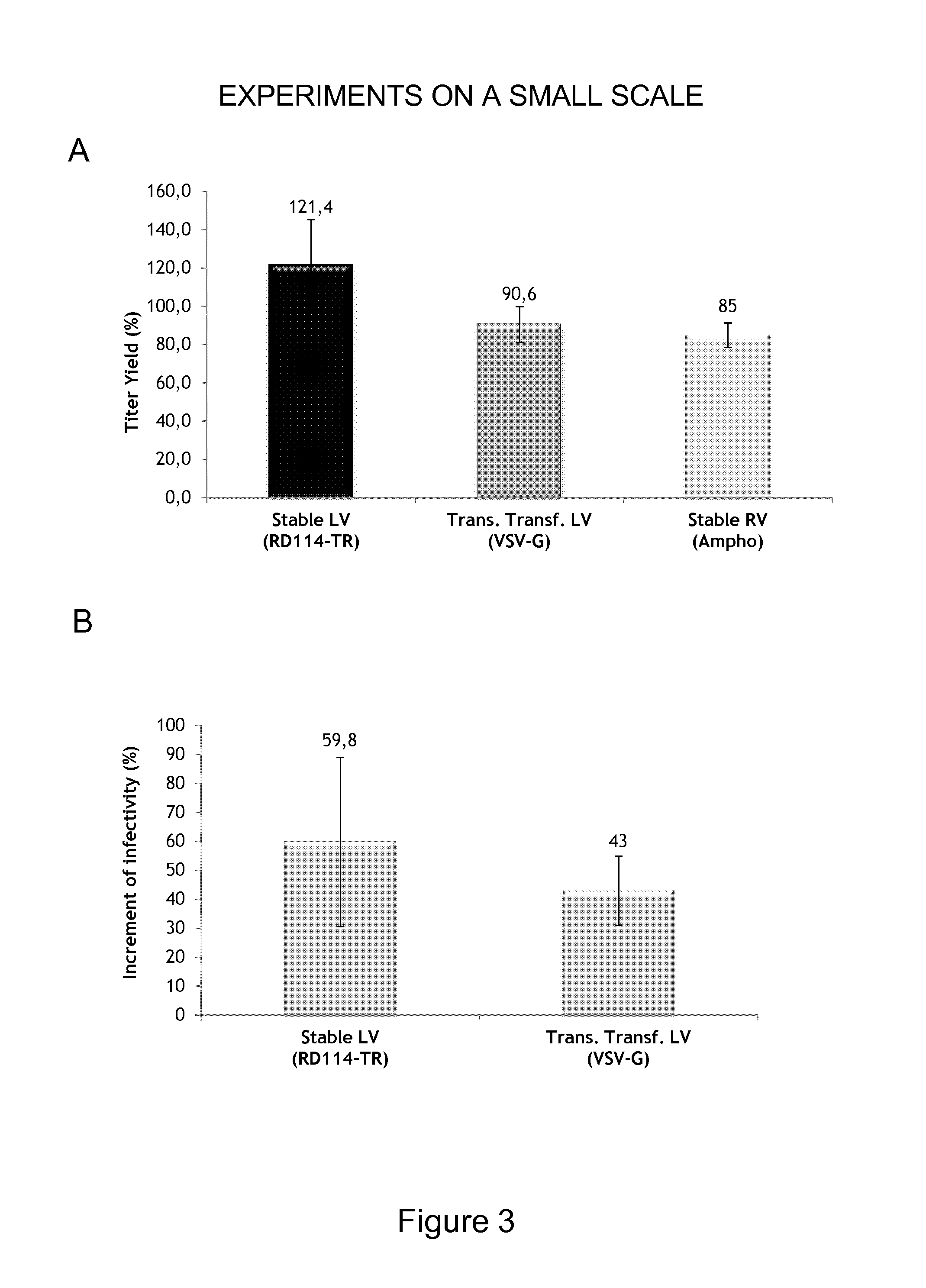Viral Vectors Purification System
a technology of viral vectors and purification systems, applied in the field of efficient purification of viral vectors, can solve the problems of low recovery (approximately 30%), insufficient condition for capturing viruses, and over-expression of certain markers on the surface of host cells, etc., to achieve good results, increase in infectivity, and increase the effect of
- Summary
- Abstract
- Description
- Claims
- Application Information
AI Technical Summary
Benefits of technology
Problems solved by technology
Method used
Image
Examples
example i
Production of VV
[0080]Stable Production of MLV Retroviral Vectors (RV)
[0081]Murine NIH-3T3-derived, e4070-pseudotyped AM12-SFCMM-TK clone 48 packaging cells were grown in DMEM (Dulbecco's Modified Eagle Medium) (BioWhittaker™, Cambrex Bio Science Walkersville, Inc. Walkersville, Md.) or X-VIVO 15 supplemented with 10% FBS (BioWhittaker™) and 2 mM glutamine at 37° C. in 5% CO2 atmosphere. The AM12-SFCMM-TK clone 48 was obtained after transduction of the construct SFCMM-3 Mut2, which encodes a modified form of the HSV-TK gene characterized by a single silent mutation at nucleotide 330 of the ORF (WO 2005 / 123912). Transduced cells were immune selected by using the anti-ΔLNGFR mAb of the Am12-SFCMM-3 Mut 2 cells and then cloned by limiting dilution (0.3 cell / well). AM12-SFCMM-TK clone 48 contains two copies of SFCMM-3 Mut2 vector. The GMP-grade retroviral vector supernatant lots were produced either in roller bottles or in a packed-bed 32-liter bioreactor in X-VIVO 15 medium in the pres...
example ii
Purification of VV by the Anti-LNGFR Abs on a Small Scale
[0086]Small scale purification of VV was carried out as follows. Supernatants containing VV were diluted with 1:5 (vol / vol) with PBS containing 0.5% BSA and then filtered with 0.45 μm filters. From one to five ml of diluted supernatants were incubated with anti-LNGFR Ab conjugated microbeads suspension (CD271 Microbeads Miltenyi Biotec, GmbH, Germany cat. #130-091-330) at the 1:40 ratio (vol / vol). The samples were then incubated at room temperature (RT) for 30 minutes on a rotating wheel. The magnetically labelled samples were loaded on the column placed into the magnetic separator, (Miltenyi, MS Columns cat. #130-042-201). After the flow-through was collected for analysis and three washes were performed with 0.5 ml of washing buffer (PBS containing 2% FCS and 0.5% BSA), the column was removed from the magnetic separator and the purified VV were collected.
example iii
Titer Calculation
[0087]VV titer was calculated on SupT1 cells by transducing them by one cycle of spinoculation at 1,240×g for 1 hour in the presence of polybrene 8 μg / ml (Sigma-Aldrich, St Louis, Mo.). Transduction efficiency was monitored by flow cytometry analysis (FACS Calibur BD Bioscience, San Jose, Calif.) of ΔLNFGR expression, as described in Porcellini et al., 2009 & 2010, using the FlowJo software (Tree Star, Inc., Ashland, Oreg.). Only transduction values ranging from 5 to 20% positive cells were used to calculate the titer according to the formula: TU=[number of cells×(% positive cells / 100)] / vol sup (in ml).
PUM
| Property | Measurement | Unit |
|---|---|---|
| size | aaaaa | aaaaa |
| size | aaaaa | aaaaa |
| cell surface | aaaaa | aaaaa |
Abstract
Description
Claims
Application Information
 Login to View More
Login to View More - R&D
- Intellectual Property
- Life Sciences
- Materials
- Tech Scout
- Unparalleled Data Quality
- Higher Quality Content
- 60% Fewer Hallucinations
Browse by: Latest US Patents, China's latest patents, Technical Efficacy Thesaurus, Application Domain, Technology Topic, Popular Technical Reports.
© 2025 PatSnap. All rights reserved.Legal|Privacy policy|Modern Slavery Act Transparency Statement|Sitemap|About US| Contact US: help@patsnap.com



